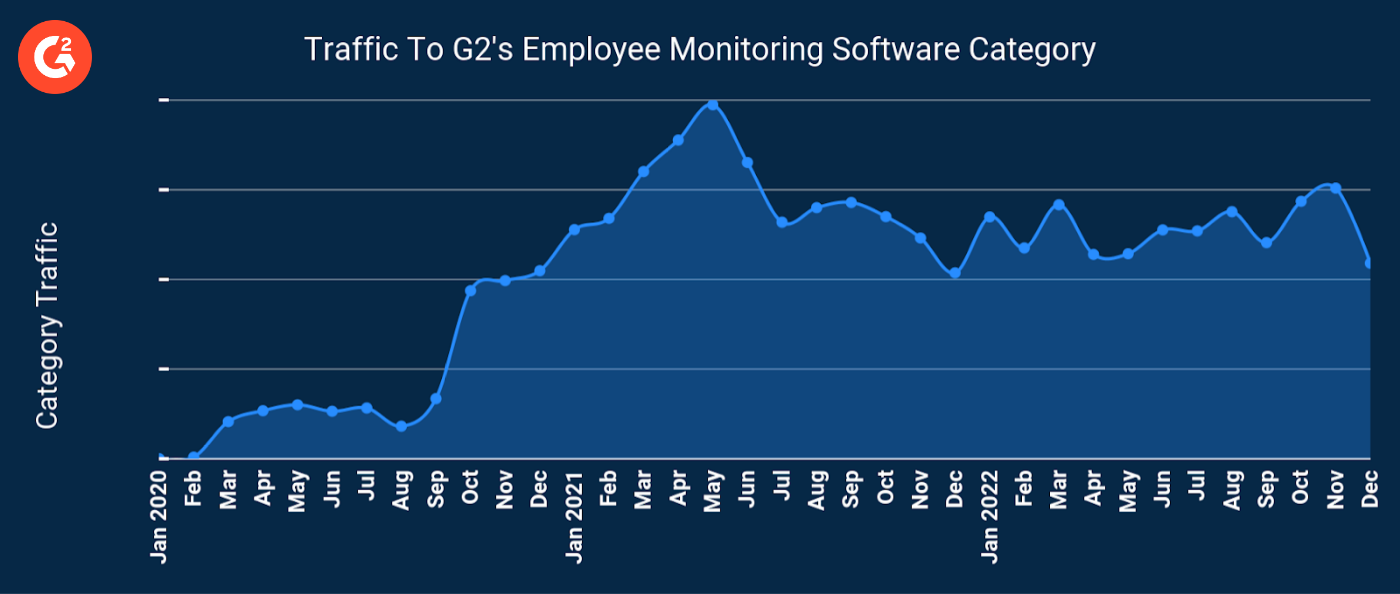HR departments are uniquely situated to oversee employee monitoring software as an instrument for managing legal liability, employee work-life balance, and addressing developmental opportunities. However, employees are becoming increasingly skeptical about its usage in their everyday work life and how the data is being interpreted. The discontent among the working population continues to rise, and state legislators have noticed this and begun enacting legislation to counter overreach.
Monitoring performance amidst employee distrust
When employees hear of employee monitoring (EM) software, many immediately associate it with workplace surveillance. An example of workplace surveillance would be the 2019 Away controversy, where The Verge reported on toxic company culture. The CEO at the time gained access to a private employee chatroom on slack and began terminating employees that spoke negatively of leadership.
Employees regularly fear having their comments be misinterpreted by a superior, which would result in them formulating a negative opinion. Now, the range of judgment expands to almost all traceable behaviors that can be measured using employee monitoring software. Considering that most employees aren’t aware of how they’re being measured and what the baseline performance is, intense suspicion is a normal response.
The growing relevance of employee monitoring software
Employee monitoring software has existed since before the pandemic. However, interest in the product has increased since the widespread adoption of hybrid and remote work situations caused by the pandemic. The implementation of remote work as the norm has completely upended how managers and business leaders interact with office norms (or lack thereof). The most common reasons managers adopt these products are to monitor productivity, workforce management, data security, legal liability, employee engagement, and work culture.
A recent study published on January 23, 2023, showed that 60% of businesses with remote employees use monitoring software. Most employee monitoring software observe employee behaviors and actions on their computer to ensure they are not engaging in non-work-relevant activities like scrolling social media or being away from the keyboard (AFK) during business hours. More sophisticated monitoring tools can include remote activation of a laptop camera, GPS tracking, and sentiment analysis of communiqué with colleagues or clients.

Even G2 data strongly supports this upward trend. As a measure of product interest, since 2020, visitor traffic to the Employee Monitoring Software category on G2 has increased by a whopping 500%.
Guiding hand or Eye of Sauron? Risks and challenges
Most employees view employee monitoring software with suspicion, and rightfully so. There is very little transparency on how they’re being measured, the capabilities of the software, and how the data is going to be used. This discontent has also been suspected of being a contributing factor to the great resignation phenomenon. However, is this the distrust of the software or the distrust of management?
In some cases, the use of employee monitoring software is justifiable. Different departments will use employee monitoring instruments depending on their departmental responsibilities. Most managerial personnel in revenue see EM as an opportunity to increase productivity, improve their bottom line, control quality, and reduce non-work related activities.
HR departments have a responsibility to guide and maintain company culture. It is well within HR’s purview to gauge how often employees use PTO, take lunch breaks, and have a poor work-life balance. Employee monitoring solutions can also be seen as an opportunity for improving employee morale, retention, compliance, DEI (Diversity, Equity, Inclusion) initiatives, and work culture. For example, are minority employees code-switching at greater regularity with some personnel over others?
This information can also be used to limit managerial overreach and to build a healthier work environment. Managers with high-performing teams can also be audited for low work-life balance (not just self-report). Managers with high-performance teams and good work-life balance can be situated into becoming company leaders as they will have a top-down effect on improving company culture.
The utilization of employee monitoring software should be planned and organized carefully with the intent of using the information in an official capacity. Legal departments should also be involved to a degree. Protocols should be written to consider the implications of how the data will be used.
Some vital questions to consider when implementing EMS
- Can it be used in Performance Improvement Plans?
- Can it be used for constructive feedback?
- Can communiqué be used as legal documentation for harassment cases when neither party is aware they’re being surveilled?
- Should leadership be transparent about employee monitoring and how it’s performed?
- Pragmatically, should leadership only reveal a part of their EM software’s capabilities while withholding knowledge of its more robust features?
Serious legal concerns on the horizon
This dissatisfaction with employee monitoring has become such a concern that some legislators have begun defining legal accountability for employers that use employee monitoring software.
State legislators have already begun to impose limitations on employee monitoring actions performed by corporations. Legislations mandating the alerting of employees when they’re being surveilled have already been passed in New York (S2628), Connecticut (Section 31-48d), and Delaware (Title 19 § 705). This is a surprisingly strong statement by state legislators as previous data privacy laws have included oversight limitations on accountability to meet business needs (e.g., CCPA, CPRA). The European Union General Data Protection Regulation (GDPR) already protects employees from discreet monitoring software.
California, the host of Silicon Valley, attempted and failed to introduce the Workplace Technology Accountability Act (AB-1651) in April 2022. It would have required employees to be notified when they’re being monitored and to allow employees to view and correct their own data. The act was also technologically comprehensive enough to forbid off-duty and personal device monitoring, facial recognition technology, and automated performance algorithms.
Employers that intend to deploy employee monitoring software are strongly advised to consult their HR and legal departments before implementation. Another important consideration is that the language does not specify how remote work will impact jurisdictions that will be interpreted when remote employees travel around the country, or even the world.
The future of employee monitoring software
The rising popularity of employee monitoring software due to the normalization of remote work is met with suspicion by many employees due to the lack of transparency in how they’re being measured and how the information is interpreted. HR departments can use this software to improve company culture and limit managerial overreach. The opportunity should be implemented with planned standard operating procedures as checks and balances on existing EM practices in revenue departments.
State legislatures have taken note of the discontent with this software and have begun passing legislation to limit its use. European employees are protected by the GDPR. Moving forward, businesses should consult with their legal and HR departments about the laws and regulations governing the use of employee monitoring solutions.
Edited By Jigmee Bhutia
Want to learn more about Employee Monitoring Software? Explore Employee Monitoring products.

Jeffrey Lin
Jeffrey is a research analyst at G2 with a focus on Customer Service and HR software. Prior to joining G2, he worked in Human Resources for Amazon. In his free time, he spends time playing video games, exploring cities, and traveling when possible.
